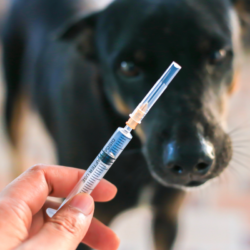West Nile Fever (WNF) is a viral disease transmitted mainly by infected mosquitoes of the genus Culex. Although most infected people have no symptoms, some can suffer serious neurological complications and even death. The disease is spreading rapidly in various parts of the world, particularly in North America and Europe, and is causing growing concern.
What is this virus?
West Nile Fever (WNF ) is an infection caused by the West Nile virus, transmitted mainly by mosquitoes. This virus is classified in group IV of the Baltimore classification. It belongs to the Flaviviridae family and the Flavivirus genus. It shares this classification with viruses such as yellow fever, dengue fever, Zika and Japanese encephalitis. WNV circulates in both tropical and temperateregions.
West Nile virus has an enveloped viral structure, with virions around 45-50 nm in diameter. It has a relatively smooth protein capsid. This capsid is composed of two main proteins: glycoprotein E and the small membrane protein M. Protein E plays a crucial role in binding to host receptors, attachment of the virus and its entry into the host cell by fusion of the viral envelope with the plasma membrane. The viral envelope is a lipid bilayer derived from the host cell membrane. It contains cholesterol, phosphatidylserine and other components yet to be identified.
The virus genome measures around 11,000 nucleotides. It is framed by non-coding hairpin structures at the 3′ and 5′ ends. It codes for three structural proteins and seven non-structural proteins required for viral replication. Once in the bloodstream of a host, West Nile virus uses the E envelope protein to bind to host cell adhesion factors. This facilitates its entry into cells by endocytosis. The acidity of the endosome triggers fusion of the viral envelope with the endosomal membrane. This releases the viral genome into the cytoplasm of the host cell.
The life cycle of the virus involves an insect vector, the mosquito, and an animal reservoir, mainly birds. Although the virus can infect humans and other mammals, these do not contribute to the virus transmission cycle. Vaccines exist for horses, but none is yet available for humans.
What are the symptoms in animals?
Many animal species, particularly wild and domestic birds, can be infected by the West Nile virus. Mosquitoes become infected by biting birds contaminated with the West Nile virus and can then transmit it to domestic herbivores, particularly horses. West Nile fever is transmitted exclusively by mosquitoes.
Infection in birds is generally asymptomatic. Occasionally, nervous signs may appear, followed by significant mortality, particularly in the United States. Symptoms in horses vary. They can range from a simple case of flu to serious brain damage, leading to nervous disorders and even death. Viral infection causes fever, encephalomyelitis and paralysis of the hind limbs, with a high mortality rate.
The West Nile virus has a wide host range. More than 300 bird species have been identified as likely to be infected by the virus. These include the American crow, the blue jay and the sage grouse. Experts consider certain species, such as the American Robin and House Sparrow, to be the main reservoirs of the virus in North American and European cities.
As for mosquitoes, species of the Culex genus are the most significant in terms of virus circulation. These include Culex pipiens, Culex restuans, Culex salinarius, Culex quinquefasciatus, Culex nigripalpus, Culex erraticus and Culex tarsalis. West Nile virus infection has been reported in a variety of mammals, including humans, non-human primates, horses, dogs and cats, as well as certain reptiles and amphibians.
How is the virus transmitted?
West Nile fever is mainly transmitted by the bites of infected mosquitoes. It is not contagious between humans. Occupations exposed to mosquito bites in infected regions are at increased risk of transmission. Mosquito vectors, particularly Culex, play a fundamental role in the circulation of the West Nile virus. They become infected by feeding on the blood of infected birds. They then transmit the virus by bite to other hosts, including humans.
Birds, both wild and domestic, are the main hosts of the virus and are crucial to its spread. Migratory birds in particular facilitate the spread of the virus from Africa to the temperate zones of Europe and Asia. Once there, local mosquitoes become infected by feeding on the blood of these birds. They thus perpetuate the virus transmission cycle.
Mammals, including humans, are considered accidental hosts of the virus. In mammals, the virus does not multiply as efficiently, thus limiting its capacity for transmission. However, cases of human-to-human transmission have been observed, notably through blood transfusion, organ transplantation, intrauterine exposure of the foetus and breast-feeding.
The possibility of human-to-human transmission of the West Nile virus is exceptional. It was highlighted during the epidemic in the United States in 2002. Such transmission is rare and only occurs in certain circumstances. Examples include blood products and organ transplants. In France, screening for West Nile virus in blood products is systematic in the Alpes-Maritimes region.
What does West Nile fever look like in humans?
In most cases, West Nile virus infection in humans presents no symptoms. However, in around 20% of cases, infected people may develop an influenza-like illness characterised by sudden onset of fever, headache, muscle and joint pain, and gastrointestinal symptoms such as nausea, vomiting and diarrhoea. A skin rash may also occur, accompanied by swelling of the lymph nodes in the neck.
In the most serious cases, which occur in less than 1% of infected people, neuroinvasive disease can develop. This manifests itself in the form of meningitis,encephalitis, flaccid paralysis or Guillain-Barré syndrome. These serious forms are more common in people aged over 55 and in immunocompromised individuals.
Symptoms of infection of the central nervous system include high fever, stiff neck, stupor, disorientation and even coma. Tremors, convulsions, muscle weakness and paralysis may also occur. Approximately 1 in 10 people with severe central nervous system damage die.
Most infected people recover completely. However, fatigue and weakness may persist for weeks or even months. For those whose central nervous system has been affected, neurological sequelae may persist in the long term.
How is the diagnosis made?
Diagnosis is based on the detection of virus-specific IgM antibodies in the serum or cerebrospinal fluid. Viral RNA can also be detected in patients’ serum from the first week.
Brain imaging is generally normal, but can sometimes reveal focal lesions. Biological confirmation of cases is based on the identification of WNV in a biological sample. The direct method (culture or detection of the viral genome) or the indirect method (IgM detection, increased IgG levels) is used.
Biological tests carried out on blood and/or cerebrospinal fluid obtained by lumbar puncture can confirm the diagnosis.
- Serology (detection of anti-West Nile virus antibodies). IgM antibodies are detected on average 3 to 8 days after the onset of clinical signs. They generally persist for 1 to 3 months. IgG antibodies appear 2 to 3 weeks after the onset of infection and persist for years. Two samples taken 2 to 3 weeks apart are needed to prove recent infection.
- Gene amplification by RT-PCR. The viral genome is detectable in plasma 2 to 18 days after infection, i.e. up to 5 days after the first symptoms.
- Viral isolation by viral culture. This cumbersome technique requires a level 3 biosafety laboratory. It is not a routine test.
Various methods can be used to detect West Nile virus. These include :
- igG antibody seroconversion,
- detection of IgM antibodies by ELISA
- neutralisation tests,
- viral detection by RT-PCR
- and virus isolation in culture.
IgM is generally detected in most cerebrospinal fluid and serum samples from infected patients at the time of clinical presentation.
How is the disease treated?
There is a screening test, but no specific treatment for West Nile virus. The treatments available are designed solely to alleviate the symptoms of the disease.
There is no commercially available vaccine for humans, although several are currently being tested. WNV infections are treated symptomatically, with hospitalisation in intensive care required for the most severe forms.
When human cases are detected, people living close to the source(s) of transmission should be reminded of mosquito protection measures. Patients suffering from a neuro-invasive form of West Nile virus infection are treated symptomatically. It often requires hospitalisation, intravenous infusions, respiratory assistance and prevention of secondary infections. There is no vaccine for humans. Supportive care in the event of severe West Nile virus disease includes
- Close monitoring of patients with encephalitis for intracranial hypertension and seizures
- Close monitoring of patients with encephalitis or acute flaccid paralysis for inability to protect their airways
- Mechanical ventilation if necessary
Acute respiratory failure may develop rapidly and prolonged ventilatory support may be required. There is no specific treatment for West Nile virus infection. Treatment of West Nile virus infection is supportive. It includes the following:
- Rest
- Fluids to prevent dehydration
- Paracetamol to relieve fever and pain
Healthcare professionals closely monitor people whose central nervous system is affected. If necessary, they put people on mechanical ventilation.
What can be done to prevent it?
To protect against mosquitoes in humid areas with a high presence of these insects, a number of protective measures are recommended. It is advisable to install mosquito nets in the windows of homes and workplaces, and possibly to use insecticide sprays at night. In addition, we recommend wearing long clothing that covers the arms and legs, and applying repellent products to exposed areas of the skin. Occasionally, wearing clothing impregnated with special insecticide products, especially in the evening and in areas with high mosquito activity, is also an option.
If viral circulation is detected in a region, the health authorities may consider local mosquito control. As far as animal health is concerned, the disease is considered contagious. In terms of public health, it is not compulsory to declare the disease in humans. The disease is not currently recognised as a compensable occupational disease. The West Nile virus is classified in hazard group 3 under the French Labour Code.
In animals
In animals, the health authorities are stepping up surveillance of wild and domestic birds (looking for antibodies) and horses (looking for clinical signs) in Mediterranean regions. The aim of this surveillance is to detect the circulation of the virus in an area in order to alert the populations at risk. A vaccine is available for horses. Given that outbreaks of infection in horses often precede human cases, it is crucial to establish an active surveillance system to detect new cases in animals and rapidly alert the health authorities. In the Americas, it is important to encourage communities to report dead birds to local authorities.
Vaccines have been developed for horses. Treatment is symptomatic and follows standard veterinary practice for virus-infected animals. Effective prevention of infection in humans depends on comprehensive and integrated mosquito surveillance and control programmes in areas where the virus is present. Studies should identify local mosquito species involved in virus transmission, including those that may act as vectors between birds and humans. Emphasis should be placed on integrated control measures, such as source reduction with community involvement, water management, chemicals and biological control methods.
In humans
Various protective measures are recommended to reduce the sources of mosquito contamination in humans. It is recommended to avoid stagnant water near homes and workplaces, by regularly cleaning drinking troughs and covering rainwater tanks. The health authorities decided to carry out mosquito control in wetlands. Hospitals are being specifically monitored to detect any human cases.
There is no vaccine against this disease in humans. Training and information for employees on the risks associated with West Nile fever and on individual and collective prevention measures are essential. Appropriate resources, such as drinking water, soaps, single-use wiping materials and first-aid kits, are in place. In addition, work clothing and personal protective equipment must be worn and properly maintained.
On an individual level, traditional measures against mosquitoes, such as mosquito nets, insecticides and anti-mosquito creams, are effective. Bare-handed contact with dead animals should be avoided.
The authorities are carrying out aerial disinsectisation campaigns to eliminate mosquitoes and larvae over large areas in ponds and marshes, with a proven effect on reducing the incidence of the disease. Controlling the virus involves mosquito control, eliminating larval breeding sites, larviciding and encouraging the use of repellents.
Specific measures have been put in place to ensure the safety of transfusions and organ and tissue donations, based on screening donors or excluding them depending on the risks identified.
Some epidemiological data…
First detected on the American continent, in the United States, in 1999, the West Nile virus (W NV) had previously been responsible for epidemics in Africa, Eastern Europe, the Middle East and Asia. Since then, it has spread throughout North America, emerging as a disease to be closely monitored. In mainland France, the virus was detected as early as 1962-1963 in the Camargue, and was found in horses in 2000. In Europe, it was initially introduced by migratory birds from Africa, and has now become endemic in several areas of southern and central Europe.
Major outbreaks have mainly affected Israel, Greece, Romania, Russia and the United States, along the main bird migration routes. Originally present in Africa, Europe, the Middle East, Western Asia and Australia, WNV now represents a global public health challenge.
In France
In mainland France, the West Nile virus (WNV) was first identified in 1962-1963 in the Camargue region. This marked its introduction into France. After a period without reports, it reappeared in horses in 2000. It has continued to cause sporadic cases over the years.
In 2003, there was a marked increase. There were 7 human cases in the Var and 5 equine cases in the Pyrénées-Orientales in 2006. This increase in the number of cases prompted a review of existing surveillance and protection measures, with a proposal to adapt them in 2004.
In 2018, active surveillance identified 25 cases of autochthonous human WNV infection along the French Mediterranean coast. The same year saw a significant epidemic, with viral circulation detected in several regions, mainly in the Alpes-Maritimes.
Annual variations in the number of cases have been shown to be influenced by a variety of factors, including urbanisation, changes in land use, avian biodiversity and climatic conditions. These epidemics are not confined to rural environments, affecting urban areas too.
Despite advances in surveillance and understanding of the disease, the ecology and transmission of WNV remain poorly understood, making outbreaks often unpredictable and difficult to control.
More recently, in 2022, cases of infection in horses were reported for the first time on the Atlantic coast, in Gironde . Also in 2023, cases in humans and equines were observed outside the usual Mediterranean areas, notably in Nouvelle-Aquitaine, in the Gironde and Charente-Maritime departments.
In the United States
In the United States in 1999, West Nile Virus, originally from Tunisia and Israel, was introduced into New York. This triggered a massive outbreak that rapidly spread across the country. This epidemic, which ran from 1999 to 2010, highlighted the global risk posed by the importation and establishment of vector-borne pathogens in non-native environments. Since then, WNV has spread rapidly from east to west across North America.
In September 1999, the first case of WNV was identified in New York. This marked its first appearance on American soil. Since then, the virus has spread widely in the United States, with more than 25,000 cases reported between 1999 and 2008. It has caused more than 800 deaths. It has also spread to Canada, Mexico, Central America and the Caribbean.
The first major epidemic occurred in 2002, affecting 4,156 people in 44 states, with 284 deaths. The largest outbreak was recorded in 2003, with 9,862 cases in 44 states, including 2,866 cases of encephalitis and 264 deaths. Subsequent years have also been marked by significant cases, although the total number of cases and deaths has fluctuated.
WNV surveillance has shown a widespread presence of the virus in the United States, affecting 47 states in 2008. The health costs associated with West Nile virus were estimated at $200 million in 2002, underlining the significant economic impact of this disease.
In 2012, there was a resurgence, with 4,500 cases diagnosed and 183 deaths. West Nile virus remains a major public health problem in the United States, with serious consequences for human health and considerable healthcare costs.
On the African continent
European authorities have been reporting human cases since the 1960s, but the frequency of infections has recently increased, establishing the virus as endemic in several European countries. In 2010, a major epidemic struck Greece, confirming 262 cases. In 2018, a significant epidemic hit Europe, far exceeding the number of cases recorded over the previous ten years. Between 1996 and 1997, Romania recorded around 500 cases, with a case-fatality rate of around 10%.
In Africa, a major epidemic occurred in 1974, affecting 3,000 people in the Cape Province after heavy rains. Isolated cases and epidemics have also been observed in several African countries as well as Algeria, Azerbaijan, Egypt, Ethiopia, India, Madagascar, Morocco, Nigeria, Pakistan, Central African Republic, Democratic Republic of Congo, Senegal, Sudan, Tunisia and a number of European countries.
In Tunisia, between 2010 and 2012, cases of infection were reported in the governorates of Tataouine, Jendouba, Kébili, Monastir and Gabès. There were a total of 15 confirmed cases, including one death, as of 5 October 2012.
In Israel in 2000, the Centers for Disease Control and Prevention (CDC) confirmed 417 cases of infection, with 326 hospitalisations and 33 deaths. The main clinical presentations were encephalitis (57.9%), febrile illness (24.4%) and meningitis (15.9%).
Worldwide circulation of the virus
Since 2010, the West Nile virus has been circulating more widely in Europe, Russia and around the Mediterranean. In 2018, a record epidemic was recorded, with more cases in Europe than in the previous seven years combined. In 2019 and 2020, the first human cases were reported in Germany and the Netherlands.
Lineage 2 of the virus, first identified in a bird in Hungary in 2004, is gradually spreading across Europe. It now coexists with lineage 1, which has historically been present in the region. Since its introduction into the United States in 1999, the virus has spread. It is now widely established in Canada and Venezuela. Nile fever is widespread in Central and East Africa, the Middle East, Asia, Eastern Europe, the Balkans and Mediterranean Europe (particularly Greece, Italy and southern France).
Until the late 1990s, West Nile virus only affected the Old World, mainly Africa, the Mediterranean countries, Eastern Europe and the Middle East. Over the last twenty years, epidemics have broken out in several countries. Notable outbreaks occurred in Romania in 1996-1997, Tunisia in 1997, Russia in 1999, and Israel in 1999 and 2000.
European authorities have been reporting human cases since the 1960s, but the frequency of infections has recently increased, establishing the virus as endemic in several European countries. In 2010, a major epidemic struck Greece, confirming 262 cases. In 2018, a significant epidemic hit Europe, far exceeding the number of cases recorded over the previous ten years. Between 1996 and 1997, Romania recorded around 500 cases, with a case-fatality rate of around 10%.
Virus surveillance
The West Nile virus (WNV) surveillance system adopts a multidisciplinary approach, based on the “one health” concept. It brings together the human and animal health sectors, particularly equine and avian, as well as entomologists. The players involved include health professionals, Regional Health Agencies (AR S), health agencies, reference laboratories and centres of expertise.
The National Reference Centre (CNR) for arboviruses also contributes to this surveillance. It provides diagnostic expertise and reports any confirmed cases to the ARS and Santé Publique France.
This surveillance is stepped up annually from 1 May to 30 November in 10 departments around the Mediterranean, during the period of vector activity, with the aim of detecting neuroinvasive WNV infections. This involves confirmatory tests for all clinically compatible cases, even in the absence of documented circulation of the virus. Clinicians, hospital laboratories and the CNR are all involved in this surveillance.
Effective prevention of WNV infection in humans requires comprehensive, integrated mosquito surveillance and control programmes in areas where the virus is present. Studies are underway to identify the local mosquito species involved in WNV transmission. Experts favour the adoption of integrated control measures, such as source reduction, water management, the use of chemical products and biological control methods.
Healthcare staff apply standard hygiene measures to prevent infections in health services. Well-equipped laboratories handle samples taken from people or animals suspected of WNV infection.
The WHO, with its regional offices in Europe and the Americas, supports surveillance and response to WNV outbreaks. It collaborates with national authorities and international partners. In France, seasonal surveillance is carried out each year between 1 June and 31 October in certain departments.
Therapeutic research
AMD3100, initially developed against HIV, has been shown to be effective against West Nile encephalitis. An oligonucleotide morpholino linked to a peptide that promotes cell penetration partially protected mice against this virus. Other methods, such as ribavirin, intravenous immunoglobulin and interferon alpha, were also studied. GenoMed, a US biotechnology company, has identified angiotensin II blockade as a possible therapy for the cytokine storm induced by West Nile virus encephalitis and other similar viruses.
In 2007, the World Community Grid launched the Discovering Dengue Drugs – Together project. This organisation uses a distributed network via the Berkeley Open Infrastructure for Network Computing. It carries out simulations of the interaction between molecules. Thousands of small molecules are being tested for their antiviral properties against West Nile virus and similar viruses.







